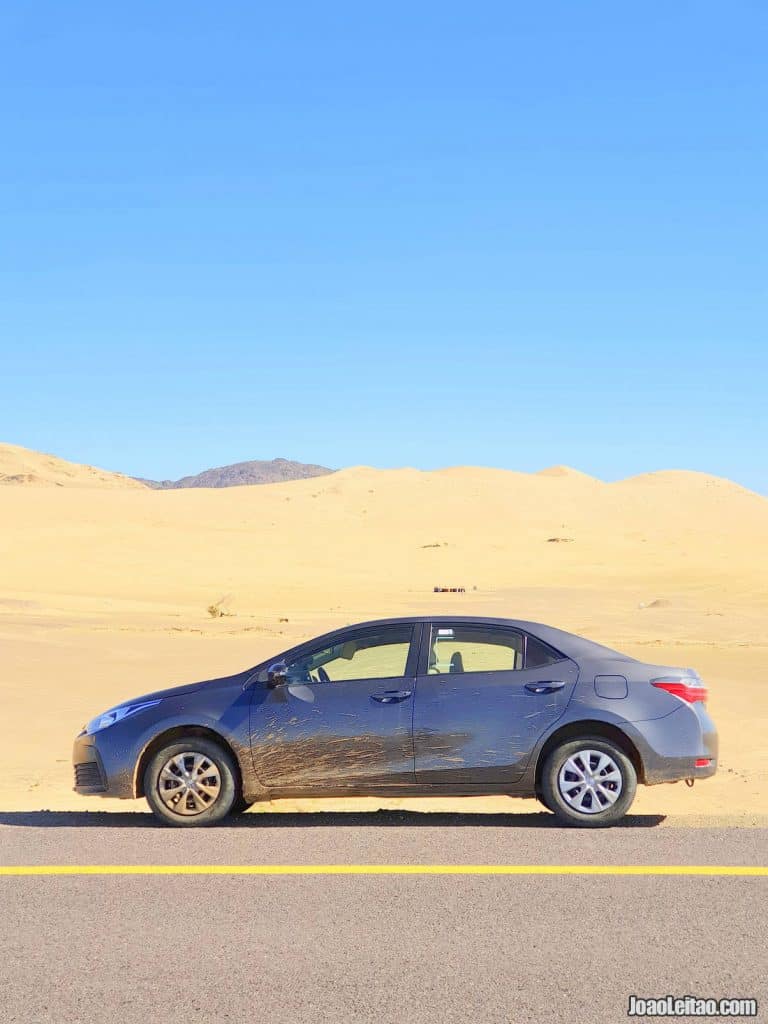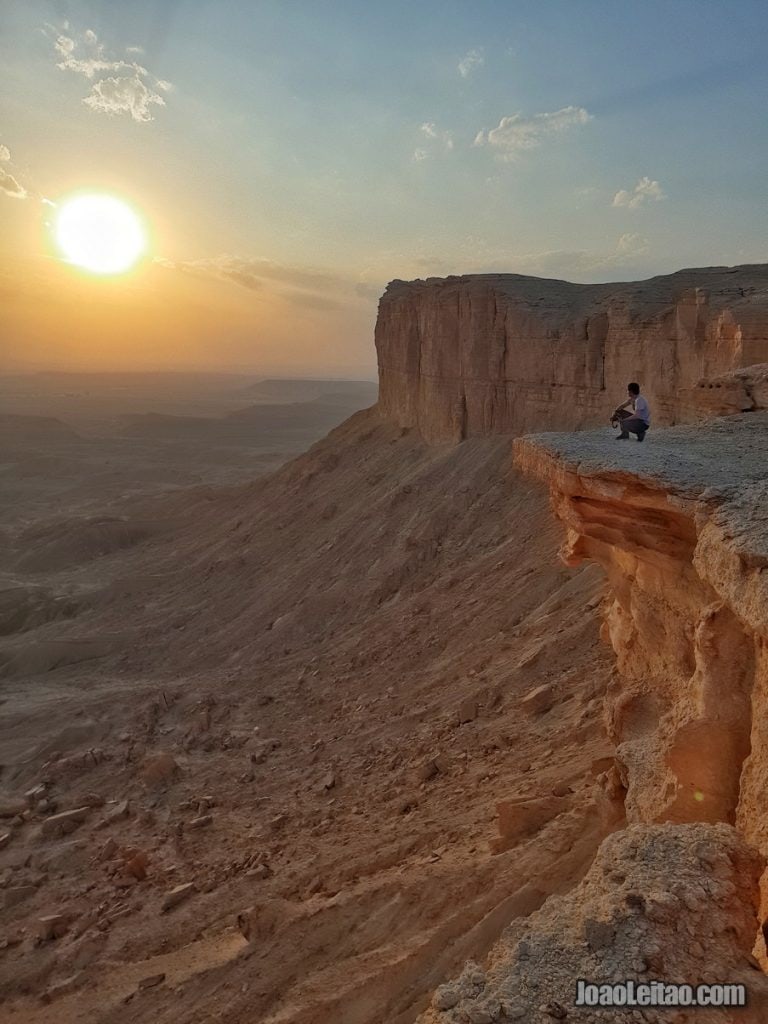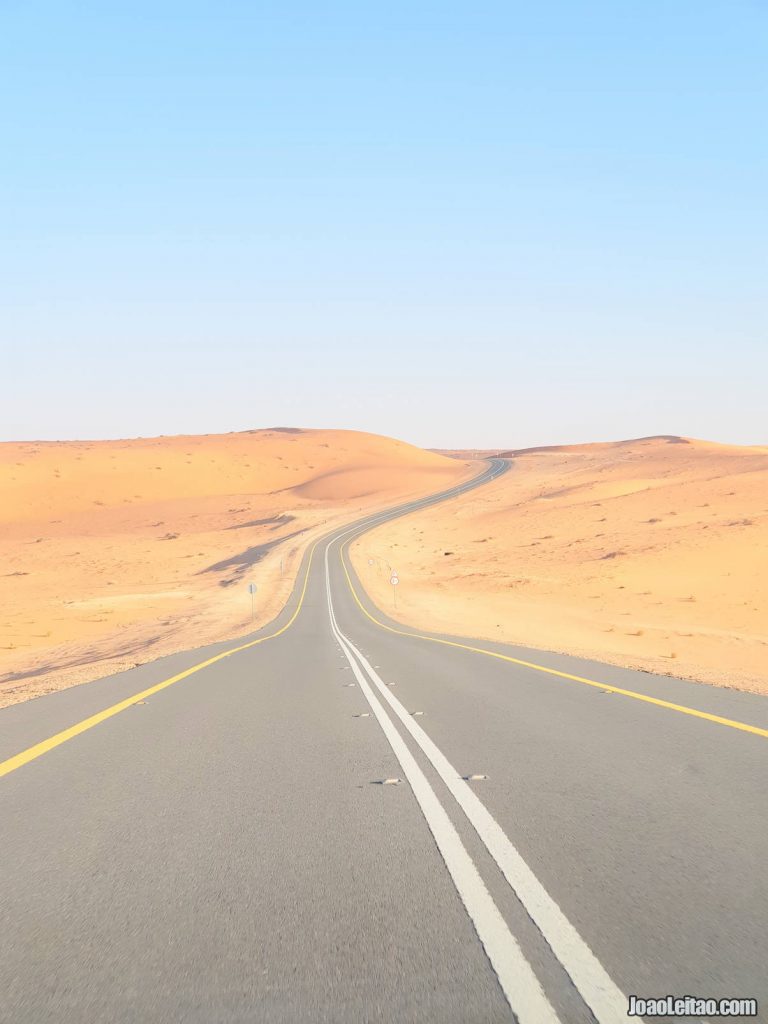Table of Contents

Saudi Arabia is a country traditionally closed to tourism. At least tourism as we understand it, because the pilgrimages to Mecca and Medina bring to the country millions of people a year, but they are religious tourists.
Driving in Saudi Arabia came up as the perfect idea in order to explore this Arab kingdom independently. During two weeks, I drove my rental car 3000 km (1864 mi) along some of the most beautiful sites of the northern region of Saudi Arabia. Hopefully, I will visit Saudi Arabia once again, and explore the southern regions.
Saudi Arabia conservative nature leads it to reduce contact with the outside to the bare minimum, especially as far as the Western world is concerned. It is one of the countries in the world for which it is almost impossible to obtain a tourist visa, especially for an independent trip, but now there is news of a controlled opening
The heir to the throne aims to boost tourism in Saudi Arabia, and talks about the opening of new resorts, to rival the neighboring United Arab Emirates on this front.
Mohammed Bin Salman wants 30 million tourists to visit his country by 2030. For now, authorities have created an e-Visa system that will expedite the process, as far as possible, of obtaining authorization to enter the country.
Read my page:
How to get a Saudi Arabia tourist visa
Why to visit Saudi Arabia?

Well, in addition to the bathing conditions on its shores, especially in the Red Sea, where tourism is planned, Saudi Arabia has a wealth of places of historical and natural interest.
The truth is that because it is so closed to tourism, the country contains wonders that remain unknown to travelers.
In the list of World Heritage of UNESCO there are five sites in Saudi Arabia, joined by nine other candidates.
Read my page:
Beautiful Old Mud-Brick Villages in Saudi Arabia
7 Famous places to visit in Saudi Arabia:
- Whoever heard of Madain Saleh, a Nabataean city with features similar to those of the famous Petra in Jordan? This is just an example, but anyone visiting Saudi Arabia will have a lot to marvel at;
- Jeddah itself, a traditional gateway for the pilgrims to Mecca, has a fascinating historical center;
- The Hejaz railroad, built in 1909 by the Ottomans to provide transportation for the pilgrims from Damascus, has a couple of segments in use that offer a unique experience;
- In Al Hula, in the north-west of the country, the visitor will find an immense ghost town made up of eight hundred mud houses, some of them with more than two thousand years old;
- Dhee Ayn is a fortified village built on a mountain of marble, a striking stronghold in a region known as the “land of a thousand and one towers” due to the many defensive structures there;
- Those who are more interested in natural phenomena will always have the delights of the desert, with its deafening silence, the endless sands, the nights under the stars;
- But there are specific places that will interest adventure travelers, such as Al Wahbah, an apparent impact site of a meteorite that is actually volcanic.
Now that doubts about the attractions of Saudi Arabia have been dispelled, it must be made clear that this is a very particular country, with its own rules, sometimes severe and with serious consequences for offenders. It is best to carefully study what you can and can not do during your visit to stay safe from incidents with the authorities.
Read my page:
Is Saudi Arabia a dangerous country to travel?
Ethnically, the 90% overwhelming majority of citizens are Arabs. The remaining 10% are Afro-Asians. But these numbers do not take into account the foreign residents. Official government data, published in 2014, point to 10 million foreigners residing in the country, or 33% of the total population.

My itinerary in Saudi Arabia
Saudi Arabia Road Trip

- Start: Jeddah
- Usfan Pilgrimage fort
- Khlais Fortress
- Al Khamrah village
- Castle Al Jafa
- Ras Atiyah Beach (White Sand Beach)
- Souq Bir Said ruins
- Wasit Ottoman Castle
- Buwatah Station
- Al Buwir Station
- Istabl Antar Station
- Hadiyah Station
- Hadiyah Bridge
- Train blown by Lawrence of Arabia
- Mogayra Castle
- Al Ula
- Jubbah
- Al Ghat
- Old Ushayqir
- Uthaythiyah
- Old Tharmada
- Qulban Tharmani Fort
- Old Raghbah
- Old Thadiq
- Huraymila
- Old Sudos
- Eye of the World
- Diriyah
- Qusur Al Muqbil
- White Canyons
- End: Riyadh

Map of rental car trip in Saudi Arabia
Total KM: 3105 km (1929 mi)
Top 9 Favorite places
Saudi Arabia Geography

Saudi Arabia has a lot of dunes and a lot of rocky mountains. If you like to drive endless asphalt roads built on top of sand, Saudi Arabia has it!
In people’s minds, Arabia and the Arabs are confused with Saudi Arabia.
The name of the country greatly contributes to this, as well as the importance of Mecca and Medina, which are located there, for the Arab world. But the truth is that the most enduring capital of the Arab Empire was Baghdad in Iraq.
Read my page:
Visit Baghdad – City Adventure Guide to the capital of Iraq
Two weeks in Saudi Arabia
Small video of my two-week trip to Saudi Arabia.
Observing the map of the region helps to understand the situation: Saudi Arabia occupies 80% of the Arabian peninsula, and its size is far superior to any of the other Arab countries in the Gulf.
It has a considerable area, covering an extension equivalent to half of the European Union, but has only 27 million inhabitants. That is, it is sparsely populated.
Riyadh, the capital of the country, is at the center of the map. Medina, Mecca, and now Jeddah, are located in a relatively small area, on a strip near the west coast, bathed by the Red Sea.
Basically Saudi Arabia borders the Red Sea and the Persian Gulf to the west and east, with Yemen, Oman and the United Arab Emirates as its neighbors to the south. To the north, Jordan, Iraq and Kuwait. Little Qatar and tiny Bahrain are like enclaves on the eastern shore of Saudi Arabia.

This position gives Saudi Arabia tremendous strategic importance. Its coasts control two main sea routes: the Persian Gulf, through which a large part of the world’s oil trade passes, and the Red Sea, the port of entry and exit of ships passing through the Suez Canal transit between Europe and the coast eastern parts of Africa and much of Asia.
Let us now read the geographical aspects of the map of Saudi Arabia. To the south, running from east to west, one sees a huge desert, the largest contiguous sand area in the world, which they call Rub ‘al-Khali, with a length of 647,500 km2.
From here it rises to the north what can be considered an extension of this zone, but in fact practically the whole country is a set of deserts connected to each other that gives the global name of Desert of Arabia.
Driving in Saudi Arabia means that you will have to drive long distances which is easily achieved due to the excellent road network.
World Heritage Sites in Saudi Arabia

Despite the difficulties in getting a tourist visa, and the country’s resistance to Western visitors, it can not be said that Saudi Arabia has little to offer. Its beaches, especially on the Red Sea coast, are fabulous, but we can take a look at the list of World Heritage Sites maintained by UNESCO, which is always a great way to embrace at a glance the best that a country has to present to its visitors. I had the chance of visiting three of these UNESCO places in Saudi Arabia. I also arrived at Mada’in Saleh (also called Al-Ḥijr), but it was temporarily closed due to rebuilding.
1. Historic Center of Jeddah
Jeddah has served since the 7th century as a connecting point between the Red Sea and the city of Mecca and still today is where a large number of pilgrims come to the holy city of Islam, whether by sea or by air.
This function shaped the city according to multi-cultural influences, resulting in a unique combination within Saudi Arabia. Today, one can observe some of these testimonies, like the tower houses, being the most remarkable example of this line of construction the one of Roshan, erected in the 19th-century.
The historic center of Jeddah is made up of several elements that contributed to the inclusion in the list of UNESCO, which happened in 2014: the old city walls, mosques, markets and palaces.
3. Rock Art in the Hail Region

In this region, located in the mountain range of Jabel Umm Sinman, there is a remarkable density of petroglyphs. The inscriptions were made with stone hammers, used by the population that was established there in communion with a lake that existed near the foot of the mountain range and that in the meantime disappeared.
3. At Turaif District in Ad Diriyah
Located a few hundred kilometers northwest of Riyadh, it was founded in the 16th century and was chosen as the first capital of the Saudi kingdom. The citadel is a repository of Najdi architecture, representing the construction techniques characteristic of the center of the Arabian Peninsula, such as the use of adobe in larger buildings and the application of a decorative sense based on geometric lines.
It was from here that in the 18th-century emanated the teachings of Sheikh Mohammad Bin Abdul Wahhab, on which Wahhabism is based, the Sunni Islam strand that is followed by the Maya of the Saudis.
It is true that some of the buildings of the citadel are in a state of ruin, but in general the preservation of the place has been maintained and it seems there are conditions for this to be maintained.
At-Turaif was added by UNESCO to the list of World Heritage of Humanity in 2010, based on the decision in criteria IV, V and VI.
Read my page:





















